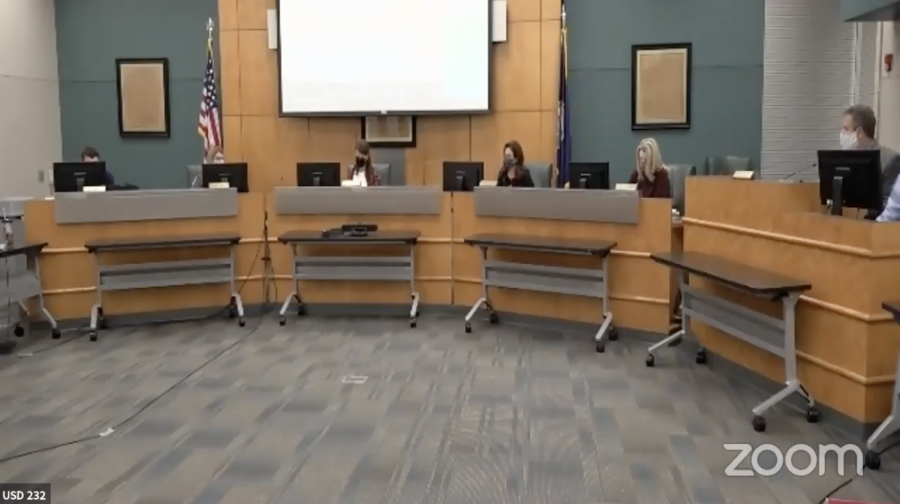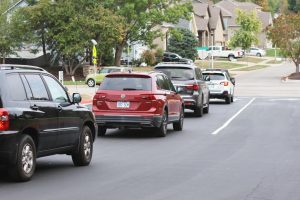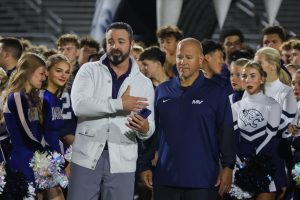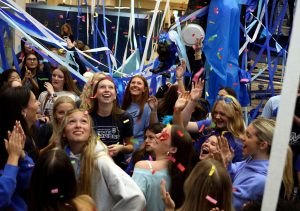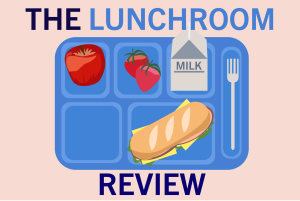Board approves shift to hybrid for second semester
The return to the “yellow” zone of the gating criteria will take effect Wednesday, Jan. 20
By Ben Wieland
The school board meets to discuss COVID-19 gating criteria.
December 21, 2020
The school board unanimously voted to return to hybrid learning for secondary students Wednesday, Jan. 20 — the first day of second semester. The decision followed a recommendation by the district COVID-19 advisory board to shift to the “yellow” zone of the gating criteria.
The decision came in conjunction with the advisory board’s recommendation to modify the interpretation of the gating criteria to a scale-based system that makes it easier to remain in the hybrid model.
The COVID advisory board announces multiple changes to their interpretation of the gating criteria — most notably, a shift to a scale-based system for determining learning models. pic.twitter.com/5RZEeLVsYN
— Mill Valley News (@millvalleynews) December 22, 2020
Superintendent Frank Harwood, speaking for the advisory committee, explained the latest trends in COVID-19 district data and the reasoning behind the shift to a more lenient interpretation of the gating criteria.
“We have seen student-to-student spread, though not from classroom contacts. We have also seen adult-to-adult spread from outside the classroom but within the buildings. The most common spread comes from athletics,” Harwood said. “Schools are able to deal with larger amounts of community spread than we originally thought.”
The board decided to return to hybrid on Wednesday, Jan. 20 instead of an immediate return after winter break in the interest of staff. Board members Ashley Spaulding and Rick Amos led a push to ensure that educators wouldn’t have to spend the holidays planning for a new model.
“We’ve got great staff who are going to do the best they can with what they have to work with,” Amos said.
“They deserve a break,” Spaulding added.
The board also unanimously elected to guarantee the benefits of the Families First Coronavirus Response Act to staff members through the end of the school year, even if the federal government fails to renew the program for 2021. The FFCRA guarantees a variety of benefits to employees affected by COVID-19, most notably paid leave for employees required to quarantine or self-isolate.
De Soto Teachers’ Association president Emily Valdez expressed her support for the measure.
“The DTA advocated for the FCCRA extension until the end of the 2020-21 school year,” Valdez said. “Hearing the district recommend our request and the board’s motion to approve it lets us know our voices are being heard.”
Multiple teachers spoke during patron input, offering various viewpoints on the district’s decision-making process. One educator told the district that some staff “feel like we are being taken advantage of” and urged the board to “please think about our families and our mental health.”
Another teacher added that, though she understands the reasoning behind hybrid and remote learning “it pains me to see [my middle school students] falling further behind.”
Though the board did ultimately accept the advisory committee’s recommendation, it discussed the potential for future changes to the committee’s role. Some, like board member Ashley Spaulding, acknowledged the committee’s hard work but added that they might change their considerations of the recommendation as the year progresses.
“The gating criteria aren’t being modified, but they are open to our interpretation,” Spaulding said.
Board member Bill Fletcher was more straightforward with his distaste for the committee’s recommendation. He urged his fellow board members to “throw yellow out the door” in favor of a full reopening, and reminded the board that they have ultimate control over gating criteria decisions.
“I understand the committee’s recommendations, but the decision comes down to the board,” Fletcher said. “I’m not saying we should do this, but we can eliminate the committee in one swipe if we want to.”
Second semester’s hybrid learning will likely look different from the previous versions of the model. Board president Danielle Heikes suggested that when students are virtual, they are still asked to participate in class; Amos urged staff to “begin coming up with the hard solutions.” Ultimately, the re-evaluation of hybrid learning will be done at the building level by principals.
The board also unanimously approved a minor schedule shift: Friday, Jan. 15 will now be a half day for both elementary and secondary students, and the afternoon will be used for a staff collaboration day.
No further calendar decisions were made, though Harwood noted that he would not recommend adding a full spring break to the second semester. Doing so, he said, might encourage travel and further spread of COVID-19.
Board members like Heikes continued to implore community members to follow CDC recommendations, wear masks, and do their best to reduce the spread of COVID-19.
“I was disheartened that, of the 71 patron comments I read, so many patrons wanted us to accommodate their Christmas and New Year’s Day parties and vacations,” Heikes said. “I can’t prevent people from doing that, but I continue to ask our community to support our teachers and help our students get back in school full time.”
The board’s next meeting is scheduled for Monday, Jan. 11.


